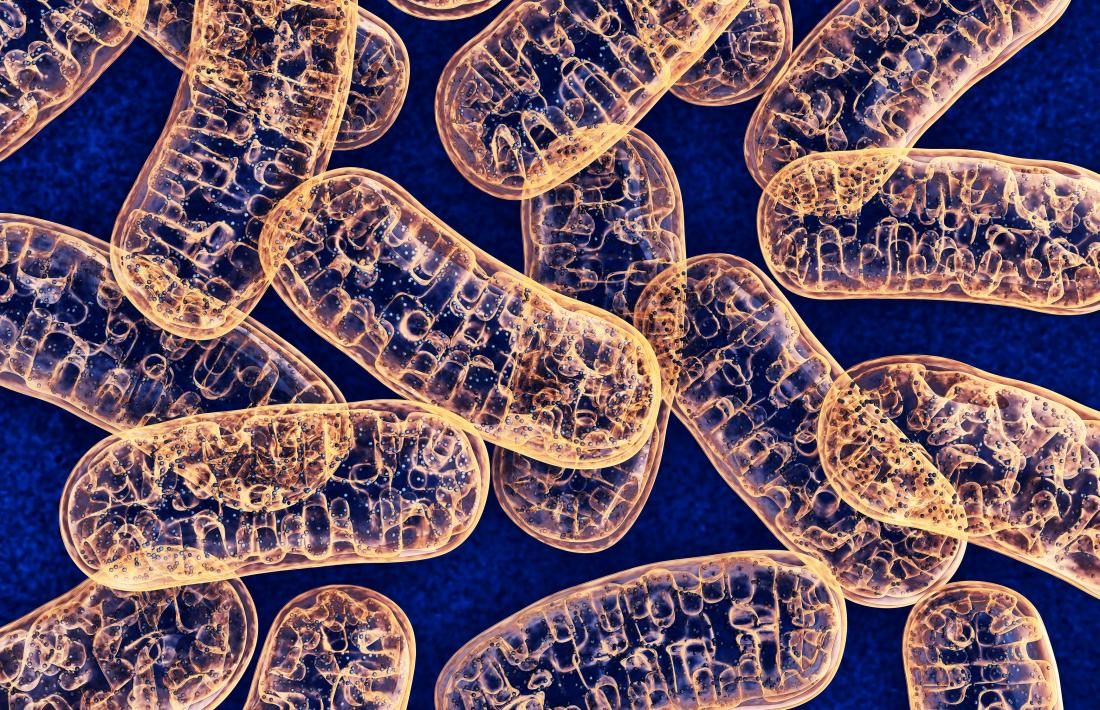The DNA within mitochondria is more susceptible to damage than the rest of the genome.
This is because free radicals, which can cause damage to DNA, are produced during ATP synthesis.
Also, mitochondria lack the same protective mechanisms found in the nucleus of the cell.
However, the majority of mitochondrial diseases are due to mutations in nuclear DNA that affect products that end up in the mitochondria. These mutations can either be inherited or spontaneous.
When mitochondria stop functioning, the cell they are in is starved of energy. So, depending on the type of cell, symptoms can vary widely. As a general rule, cells that need the largest amounts of energy, such as heart muscle cells and nerves, are affected the most by faulty mitochondria.
The following passage comes from the United Mitochondrial Disease Foundation:
“Because mitochondria perform so many different functions in different tissues, there are literally hundreds of different mitochondrial diseases. […] Because of the complex interplay between the hundreds of genes and cells that must cooperate to keep our metabolic machinery running smoothly, it is a hallmark of mitochondrial diseases that identical mtDNA mutations may not produce identical diseases.”
Diseases that generate different symptoms but are due to the same mutation are referred to as genocopies.
Conversely, diseases that have the same symptoms but are caused by mutations in different genes are called phenocopies. An example of a phenocopy is Leigh syndrome, which can be caused by several different mutations.
Although symptoms of a mitochondrial disease vary greatly, they might include:
- loss of muscle coordination and weakness
- problems with vision or hearing
- learning disabilities
- heart, liver, or kidney disease
- gastrointestinal problems
- neurological problems, including dementia
Other conditions that are thought to involve some level of mitochondrial dysfunction, include:
- Parkinson’s disease
- Alzheimer’s disease
- bipolar disorder
- schizophrenia
- chronic fatigue syndrome
- Huntington’s disease
- diabetes
- autism
Mitochondria and aging
Over recent years, researchers have investigated a link between mitochondria dysfunction and aging. There are a number of theories surrounding aging, and the mitochondrial free radical theory of aging has become popular over the last decade or so.
The theory is that reactive oxygen species (ROS) are produced in mitochondria, as a byproduct of energy production. These highly charged particles damage DNA, fats, and proteins.
Because of the damage caused by ROS, the functional parts of mitochondria are damaged. When the mitochondria can no longer function so well, more ROS are produced, worsening the damage further.
Although correlations between mitochondrial activity and aging have been found, not all scientists have reached the same conclusions. Their exact role in the aging process is still unknown.
In a nutshell
Mitochondria are, quite possibly, the best-known organelle. And, although they are popularly referred to as the powerhouse of the cell, they carry out a wide range of actions that are much less known about. From calcium storage to heat generation, mitochondria are hugely important to our cells’ everyday functions.

